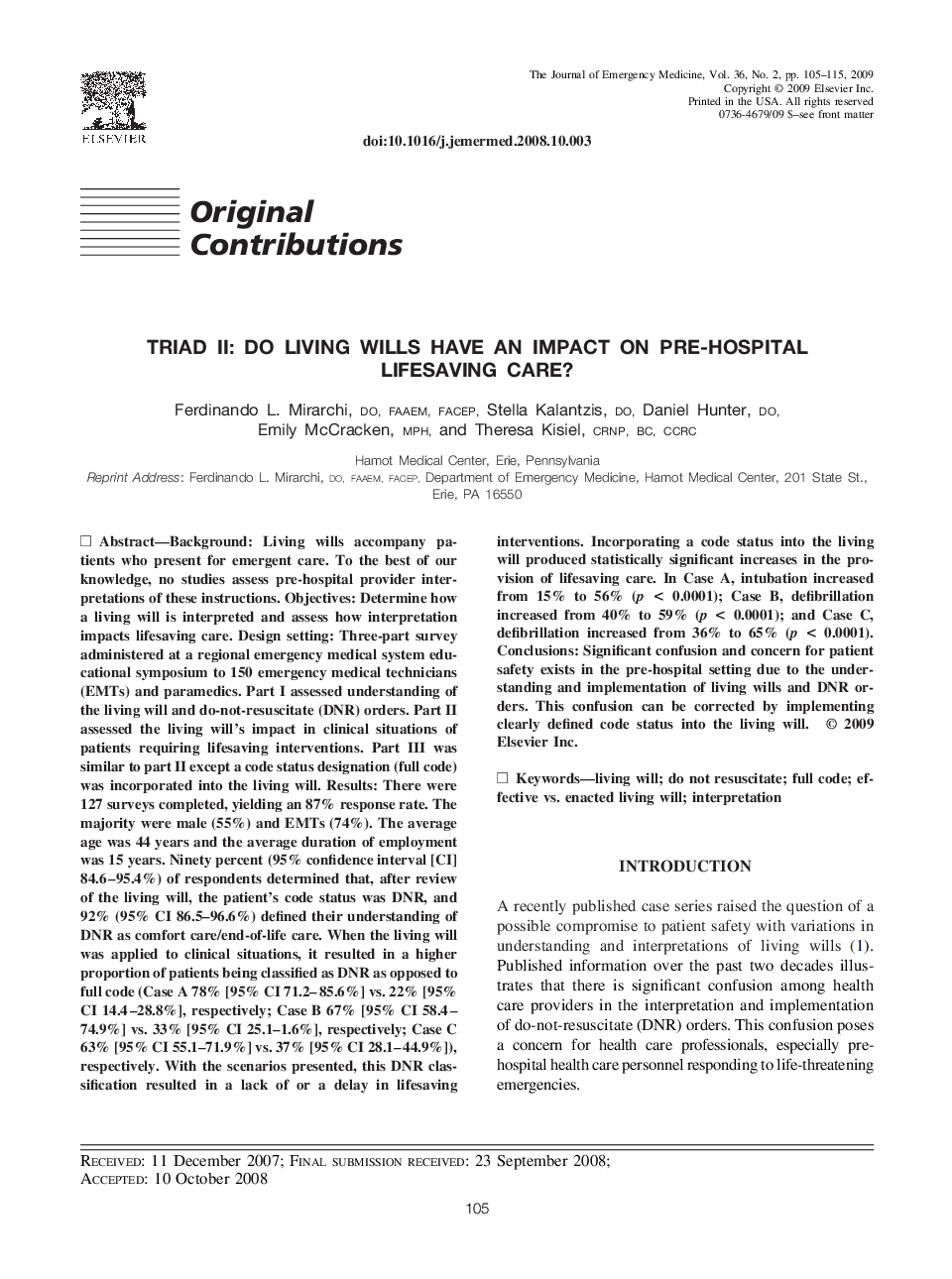| کد مقاله | کد نشریه | سال انتشار | مقاله انگلیسی | نسخه تمام متن |
|---|---|---|---|---|
| 3250724 | 1589195 | 2009 | 11 صفحه PDF | دانلود رایگان |

Background: Living wills accompany patients who present for emergent care. To the best of our knowledge, no studies assess pre-hospital provider interpretations of these instructions. Objectives: Determine how a living will is interpreted and assess how interpretation impacts lifesaving care. Design setting: Three-part survey administered at a regional emergency medical system educational symposium to 150 emergency medical technicians (EMTs) and paramedics. Part I assessed understanding of the living will and do-not-resuscitate (DNR) orders. Part II assessed the living will's impact in clinical situations of patients requiring lifesaving interventions. Part III was similar to part II except a code status designation (full code) was incorporated into the living will. Results: There were 127 surveys completed, yielding an 87% response rate. The majority were male (55%) and EMTs (74%). The average age was 44 years and the average duration of employment was 15 years. Ninety percent (95% confidence interval [CI] 84.6–95.4%) of respondents determined that, after review of the living will, the patient's code status was DNR, and 92% (95% CI 86.5–96.6%) defined their understanding of DNR as comfort care/end-of-life care. When the living will was applied to clinical situations, it resulted in a higher proportion of patients being classified as DNR as opposed to full code (Case A 78% [95% CI 71.2–85.6%] vs. 22% [95% CI 14.4–28.8%], respectively; Case B 67% [95% CI 58.4–74.9%] vs. 33% [95% CI 25.1–1.6%], respectively; Case C 63% [95% CI 55.1–71.9%] vs. 37% [95% CI 28.1–44.9%]), respectively. With the scenarios presented, this DNR classification resulted in a lack of or a delay in lifesaving interventions. Incorporating a code status into the living will produced statistically significant increases in the provision of lifesaving care. In Case A, intubation increased from 15% to 56% (p < 0.0001); Case B, defibrillation increased from 40% to 59% (p < 0.0001); and Case C, defibrillation increased from 36% to 65% (p < 0.0001). Conclusions: Significant confusion and concern for patient safety exists in the pre-hospital setting due to the understanding and implementation of living wills and DNR orders. This confusion can be corrected by implementing clearly defined code status into the living will.
Journal: The Journal of Emergency Medicine - Volume 36, Issue 2, February 2009, Pages 105–115